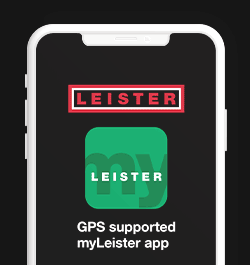Optimizing Your Online Presence for a Seamless User Experience on All Devices

By LEVERAGE.
Brands often create content strategies that cater to specific devices and their expected user behavior.
Does smartphone and tablet user behavior differ so much that unique content strategies have to be crafted around each device, or should brands provide content that caters to the user regardless of their device?
Seamless experiences are extremely important to users. When users can access your content from any device, you boost engagement and increase the probability of conversion. If your brand wants to stay competitive, you have to decide if you’re willing to invest in a cohesive user experience that encourages sales and prevents customers from leaving your site to interact with one of your competitors.
Mobile Users
Mobile users are typically on the go. They want information quickly so they can take immediate action. They’re generally interacting with their devices to find phone numbers, get directions, schedule appointments, find hours of operation, place orders, and so on.
Because on-the-go users expect quick information, we’re seeing a sharp rise in the number of dedicated mobile websites that present only essential information for smartphone users with high purchase intent. However, many users feel like these mobile-optimized sites don’t have enough information.
Is providing a stripped down version of your brand’s website really the best strategy? In reality, not all smartphone users are in a hurry, and many of them have the desire to digest more content if it’s readily available.
Therefore, brands must find a way to strike a balance that provides smartphone users with a positive user-experience without sacrificing content. In other words, brands should continue to prioritize pertinent, task-oriented content for on-the-go users with high purchase intent, while also making additional content available for the smartphone users that want it.
Tablet Users
Due to their larger screen size, tablets are preferred over smartphones for performing research and other activities like reading and watching videos. Despite only a few inches separating mobile displays and tablet displays, there is a sharp contrast between user behavior for tablets and mobile phones.
As a result, brands often serve the same content to tablets and desktops. A lack of content isn’t the issue, but issues do arise when brands rely on their desktop user-interface to capably serve users who are interacting with your brand via tablet.
Navigating a website designed for desktop on a tablet can be cumbersome. The optimal solution is for brands to provide the same content available to desktop users, but in a user-interface designed for tablets.
The purchase intent of tablet users also differs from mobile users since tablet users are more likely to utilize their device for researching products and services that may potentially result in a sale sometime in the future. So, although purchase intent may typically be lower for tablet users, tablets still play a fundamental role in facilitating the purchase process, particularly for products or services that require a high level of involvement from the user.
Example
Take for example someone looking to buy a new 60-inch television. Before making the purchase, the user probably researches different models, product specifications, and customer reviews. This research is most likely performed on a tablet or desktop in a home environment.
After the user narrows down their options, and goes to the store to physically see the models they’re interested in, they will most likely rely on their mobile device to recall that same information. This is a critical moment because the user-experience is disrupted when the mobile version of that store’s website is stripped down to the point where it is missing the information the user is attempting to find.
This can lead to the user referring to a competing website to find the information they’re looking for. If that competitor just so happens to also have better prices, the disruption in user-experience may ultimately result in a lost sale.
This is a perfect real-world example of why brands should provide their customers with a consistent experience across all devices. Failing to do so not only frustrates the customer and negatively impacts brand perception, but also disengages the customer, and gives them a reason to refer to your competitors.
Conclusion
Consumers expect to have access to the same content regardless of device. Meeting this expectation can result in better brand perception and increased sales, while failing to meet this expectation can result in stifled user engagement, limited sales, and diluted SERP rankings.
Our award-winning agency understands that providing a seamless user experience for your customers is integral to capitalizing on every visit to your website. Driving traffic to your website is important, but your ultimate goal is to convert those users into customers. We provide our clients with the online infrastructure to dominate the competition and the support to ensure that their customers’ experiences are unparalleled.
Ready to partner with an award-winning agency that delivers results? Let's get started.
Original article source: LEVERAGE






















Comments
Leave a Reply
Have an account? Login to leave a comment!
Sign In